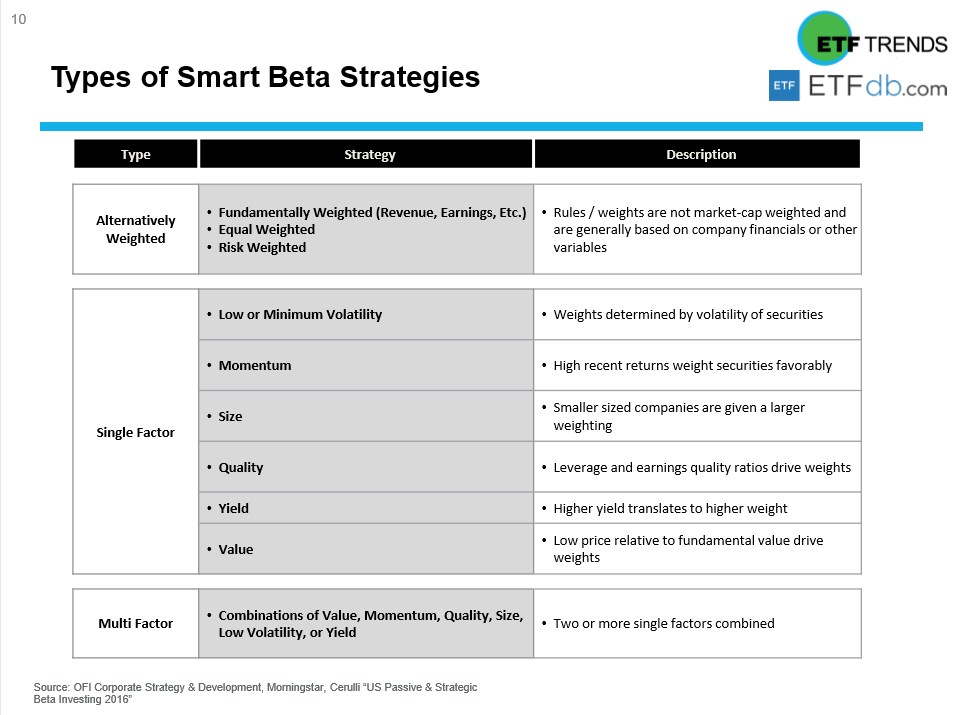The month of May reminded investors that they need to be strategic when it comes to investing in 2019 as volatility took hold of the capital markets as the U.S.-China trade deal that was supposed to happen morphed into an impasse. As such, more investors are beginning to realize the importance of incorporating smart beta strategies into their portfolios, especially current asset owners, according to a survey conducted by index and analytics provider FTSE Russell.
Per an Institutional Investor article, “out of 178 retirement plans, endowments, foundations, and other institutions polled by the index provider, 58 percent said they had allocations to smart beta strategies, up from 48 percent last year. Another 20 percent said they were currently evaluating or planned to evaluate adding smart beta to their portfolios.”
Additionally, smart beta usage “has nearly doubled in popularity since the survey’s debut in 2014, when 32 percent of respondents reported smart beta allocations. Smart beta strategies utilized by survey respondents included funds tied to investment factors like low-volatility, value, and momentum, as well as equal-weighted and fundamentally weighted indexes.”
With smart beta usage on the rise, one of the challenging aspects advisors face with this more cautious investor is the plethora of options available, especially in the exchange-traded fund (ETF) space. Where are the opportunities in ETFs given the current market landscape and how can smart beta-factor strategies work in a portfolio?
A market-capitalization-weighted index provides clients with exposure to a particular market based on security prices, without considering any true company fundamental to judge its value. However, the Great Recession of 2008 roiled investors with deep declines that they were not anticipating, as a result of overexposure to potentially overpriced stocks relative to their true value.
As such, things began to change, with many financial advisors shifting to smart beta strategies in the past 10 years. The first aspect to touch upon was the limitations of a market cap weighted index, which would then warrant the need for smart beta and factor strategies.
Through smart beta, investors get adaptable exposure with the rules-based approach in conjunction with reaping the rewards of diversification via access to a broad market index. In addition, the simplicity of buying a broad-based market index has a concentration of risk, and should a market correction ensue comparable to that witnessed in the fourth quarter, investors are left vulnerable.
As such, smart beta strategies can be segmented into alternatively weighted, single factor and multi factor strategies–the latter to diversify concentration in a specific factor–low or minimum volatility, momentum, size, quality, yield, and value.
“Investors are becoming more comfortable with smart beta as they have developed an increased understanding of these strategies and more confidence in their track records,” said Rolf Agather, research and innovation managing director at FTSE Russell.

For more market trends, visit ETF Trends.
